Once-lost Nativity scene now found and celebrated in Edmundston, 50 years after debut
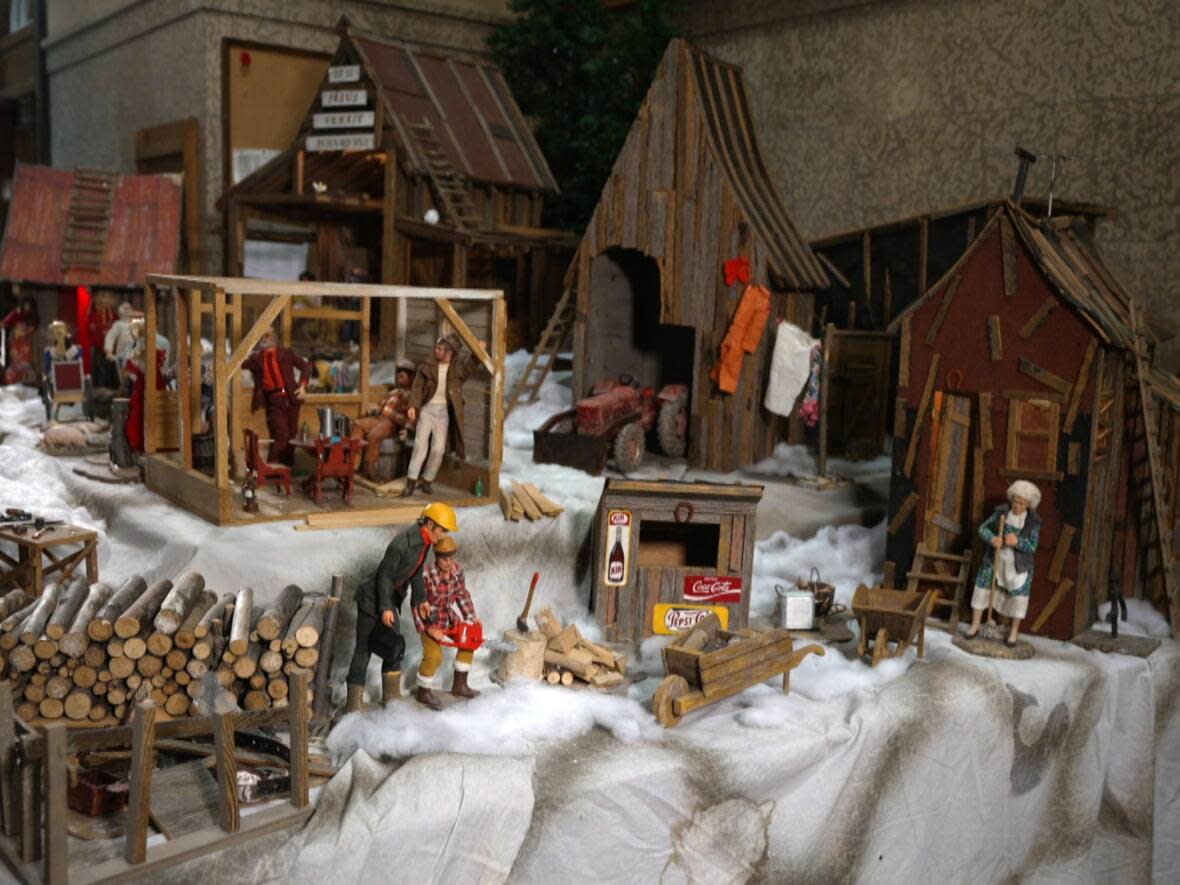
Brigitte Picard was just 8, but she vividly remembers the 2½ months leading up to Christmas 1972.
Her father, artist Claude Picard, was asked by Rev. Eymard Desjardins to create a new "modern type" of Nativity scene for the Cathedral of the Immaculate Conception in Edmundston.
Brigitte watched her parents work tirelessly on the project that included a large order of Barbie, Ken, G.I. Joe and Johnny West dolls from the Simpson-Sears and Eaton's catalogues.
"We wanted to play with them, but my parents didn't want us to," she laughed. "When I was young I played with Barbies and my sister played with G.I. Joes."
WATCH | Modern crèche brings memories from the past:
Those 35 dolls would be re-imagined by Brigitte's father, who re-painted their faces, and her mother, who sewed them all new costumes as part of an impressive and unique tableau for the front of the church.
"My father came up with this idea if Christ were to come back," Brigitte said. "The crèche is in the Madawaska region. That's what it's supposed to be."
Modern crèche showed darker side
The crèche was a far cry from the traditional Nativity scene with Mary and Joseph in their robes, looking down at Jesus in a manger surrounded by the three wise men.
Instead Claude's version included "drunkards and prostitutes" and "shabby" buildings that were based on barns and houses in Sainte-Basille, Green River and other rural parts of the region.

On the front page of the Telegraph-Journal on Dec. 23, 1972, the 6-by-6 metre scene, was described as "an entirely new concept designed and executed by Edmundston artist, Claude Picard."
Claude told the newspaper that the dolls, assembled in groups, each represented an idea or symbol related to the past century.
"A group of hippies, with long hair, who wear flowers, and strum guitars, depict today's youth who refuse society as it is," he said at the time.
Mary and Joseph are portrayed by dolls wearing modern clothing "as though Christ had been born in this century."
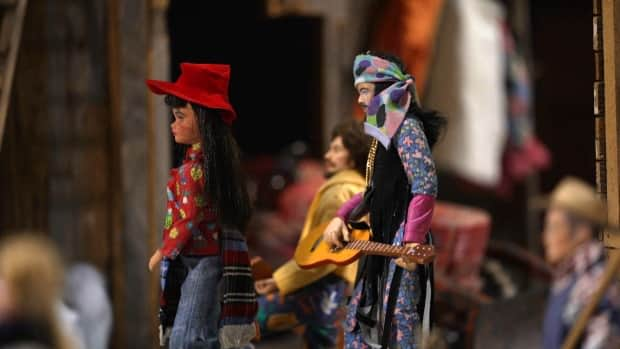
Brigitte helped her father to set up the creche for the first time 50 years ago.
"I remember my father asked me to go and help to put all the characters and I was able to go on top of the tables and put everything where he wanted things to be," she said. "I really love to do that."
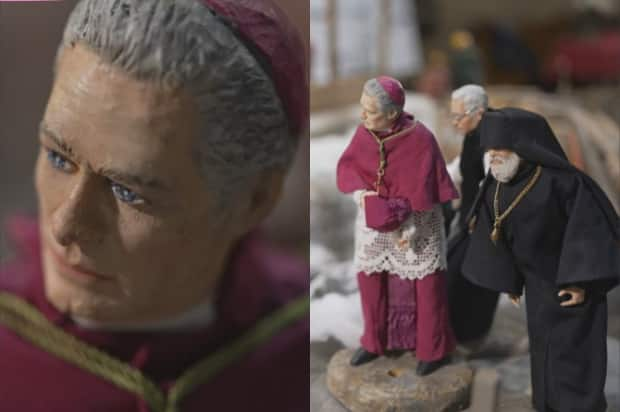
She also loved her father's interpretation of the Nativity scene, and said everyone responded to the "farmers and woodsmen of Madawaska County" who were included, the local buildings and how three bishops — Catholic, Orthodox and Anglican — were created to replace the wise men.
"They're looking for unity," Brigitte explained.
Nativity scene travelled through province, then disappeared
The crèche that was displayed at the front of the the Cathedral of the Immaculate Conception was a stark contrast to the opulence of the church.
Brigitte explained that her father wanted to depict "the poor and the sinners" because Jesus was asking for them to come to him.
"It wasn't just for the rich," she said.

After being displayed for years at the Edmundston cathedral, the Nativity scene moved around. First to a museum in Saint John, then to a museum in Edmundston, then it was displayed in a window, Brigitte said, and then "it kind of got lost."
For years the family didn't know where it was.
Claude Picard died in 2012 at the age of 80, and Brigitte said she realized after he was gone how much she wanted to surround herself with his work. She set out to find the beloved crèche from her childhood, and soon realized she wasn't the only one who missed it.
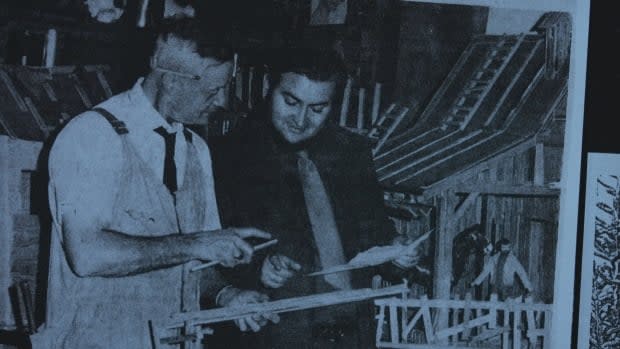
It took a couple of years of asking before officials with the City of Edmundston finally discovered it had been stored in a basement. Brigitte said it turns out the person who had put it away had died and no one else knew where it was.
"I was hoping it was still there and that it wasn't just thrown away because it meant a great deal to me," she said.
"When we found it, I was really happy and when I called here at the cathedral and they were really happy to have it and right away they said, 'Yes, bring it over here.'"
Tradition continues 50 years later
The pieces were wrapped and in good shape, and Brigitte immediately started to clean it up and make repairs so it could once again be displayed.
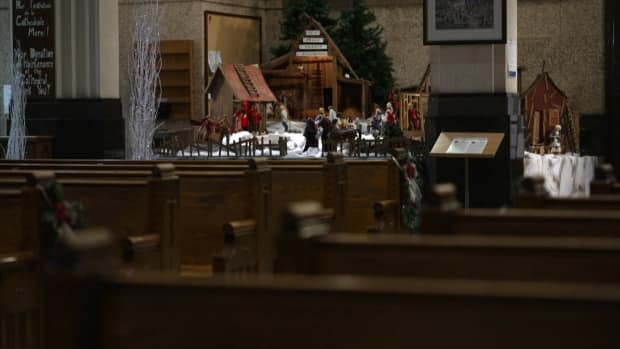
She has now returned to the tradition her father started in 1972, of setting the crèche up just a little differently every year.
She's even discovered notes her father left about the changes he wanted to see from year to year.
This year marks the 50th anniversary of the Nativity scene Claude Picard created and for Brigitte the best part has been seeing the reaction from the community.
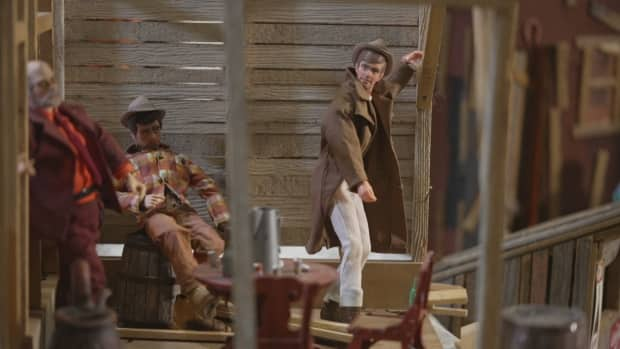
"The last few Fridays I came here because they had some choirs singing and they were inviting people to come and look at the crèche," she said.
"Some people almost had tears in their eyes because they came with their parents here, and maybe their parents aren't there anymore … but it reminded them. It was really important for them to see that."


